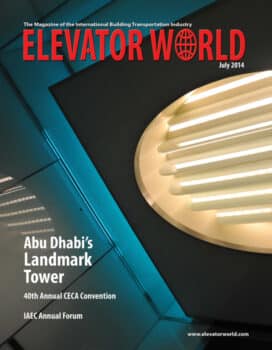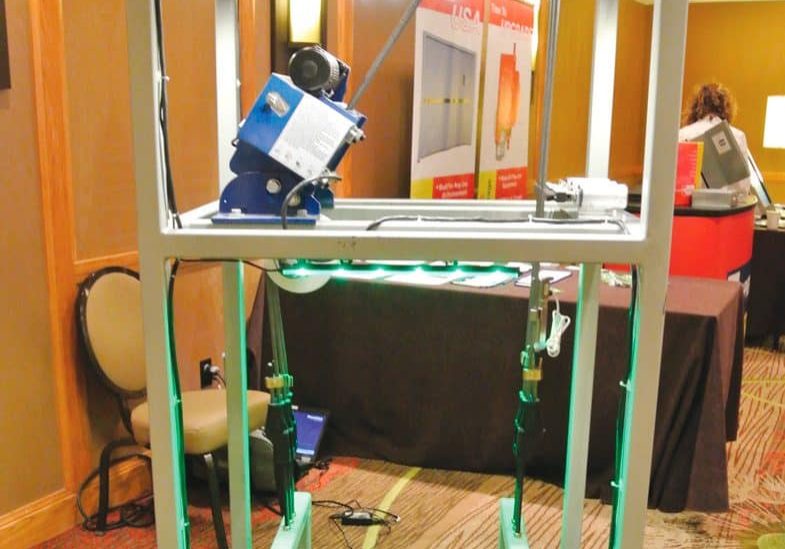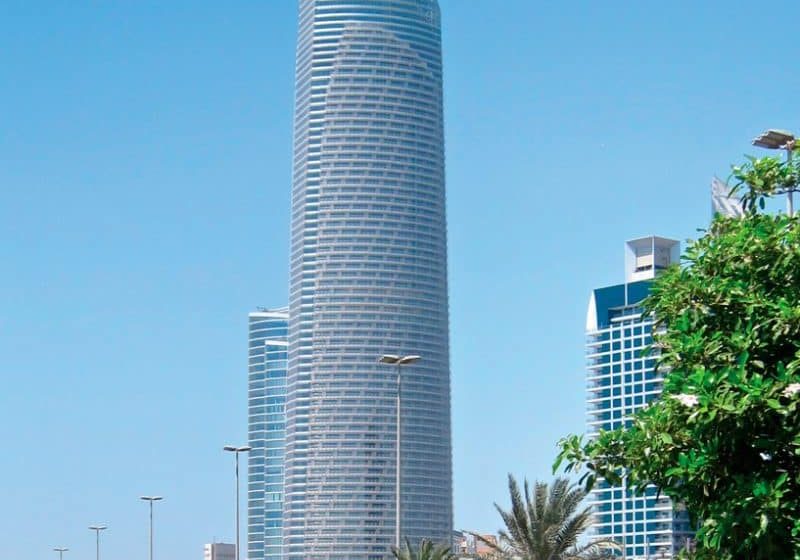Remember how I recently said ELEVATOR WORLD regularly tries to take the temperature of the industry? It’s a predictive issue for us, constantly searching out what’s hot and what’s not. We do this by interviewing industry leaders, surveying our advisory board, attending industry events, reading construction journals and sister publications, and even looking at the skylines as we travel. From all these points of interest, we sense the industry is picking up steam. I was in Manhattan, New York, briefly this month to see my granddaughter dance and found Lincoln Center surrounded by cranes. Nearby New Jersey is growing, too. According to FMI, a consultant to the engineering and construction industry, cautiously optimistic growth of 7% is predicted in 2014. This is still lower than we all would like, but as e-commerce expands, the growth of brick and mortar will grow at a slower rate. Healthcare and transportation facilities will grow more than commercial, residential and educational ones.
When Elevator World, Inc. had its Annual General Meeting in May, we asked all our directors for feedback on business in their area of the world. In the U.S., there was agreement that union and merit shops are both busy and are having a hard time finding trained technicians. Modernization is running ahead of new sales, and the OEMs are creating modernization packages to compete with the independents. In Europe, the view was different country to country. It was noted that Italy’s market was still down, while Germany is doing quite well.
The need for education was mentioned in every industry area discussed. One effect of the long global recession was that a large number of elevator technicians eventually retired and created an “experience drain” we are just beginning to notice. Now that business is beginning to come back, there is a great need for the transfer of training and practical experience. This is not a process that happens quickly, and every association is working on the issue.
Attendance at industry events and association longevity are also a good measure of the strength of the industry. In this issue, we report on three bellwether association events — the Canadian Elevator Contractors Association (CECA), the International Association of Elevator Consultants (IAEC) and the Elevator Conference of New York (ECNY). Both the CECA and ECNY expositions had record turnouts for booths this year; at the latter, increased floor space was quickly used up. At IAEC, consultants enjoyed their 25th annual forum, which was well attended and included an 8-hr. NAESA International QEI continuing-education class and a QEI upgrade exam during the week. Another association, the National Elevator Industry Inc.(NEII®), celebrated 100 years of service to the industry.
The focus topic this month is “Hydraulic Elevators and Components.” Two Company Spotlights shine on Traditional Lift Products, a 15-year-old company out of Liverpool, U.K., and ALGI, a German company that has been in business for more than five decades. Our historian and correspondent Dr. Lee Gray writes about the reemergence of the hydraulic elevator in the late 20th century as a viable solution for low-rise applications. Gray notes that another invention in the early 20th century, the automobile, fostered the return of the modern hydraulic lift. The final focus topic article is on Pennsylvania State University’s elevators and their conversion from oil hydraulic fluid to environmentally safe soy-based fluid.
As Elevator World strives to integrate new partnerships in Turkey, South America, China and India, we see others doing the same. Our cover story this month is on the Landmark Tower in Abu Dhabi, a project where the players spanned the globe from the U.S., to the U.K., to Japan and more. The elevators, by ETA Melco, are among the fastest in the region and use destination dispatch to speed travelers upward. Another feature, “Coming to America,” on the Owensboro Convention Center in Kentucky, united the U.S.-based Abell Elevator and Hong Kong’s Anlev for a remarkable project. How it happened — a chance meeting at a NAEC Convention — makes the case for global integration and making new friends in familiar places.
In such a full issue, we were thrilled to snag an interview with the CEO of ThyssenKrupp Elevator, Andreas Schierenbeck, who is running full speed only 18 months into his position. He notes, “A major challenge facing the elevator industry is the quest to be the fastest, at times at the expense of passenger comfort. We need,” he said, “to find other solutions.” And so, the temperature in our industry continues to rise with more questions: how do we educate the many employees needed, quickly and safely? How do we integrate global partners for better buildings? How do we move more people higher in comfort? The best minds in the industry are working on the answers.
Get more of Elevator World. Sign up for our free e-newsletter.









